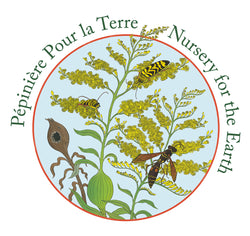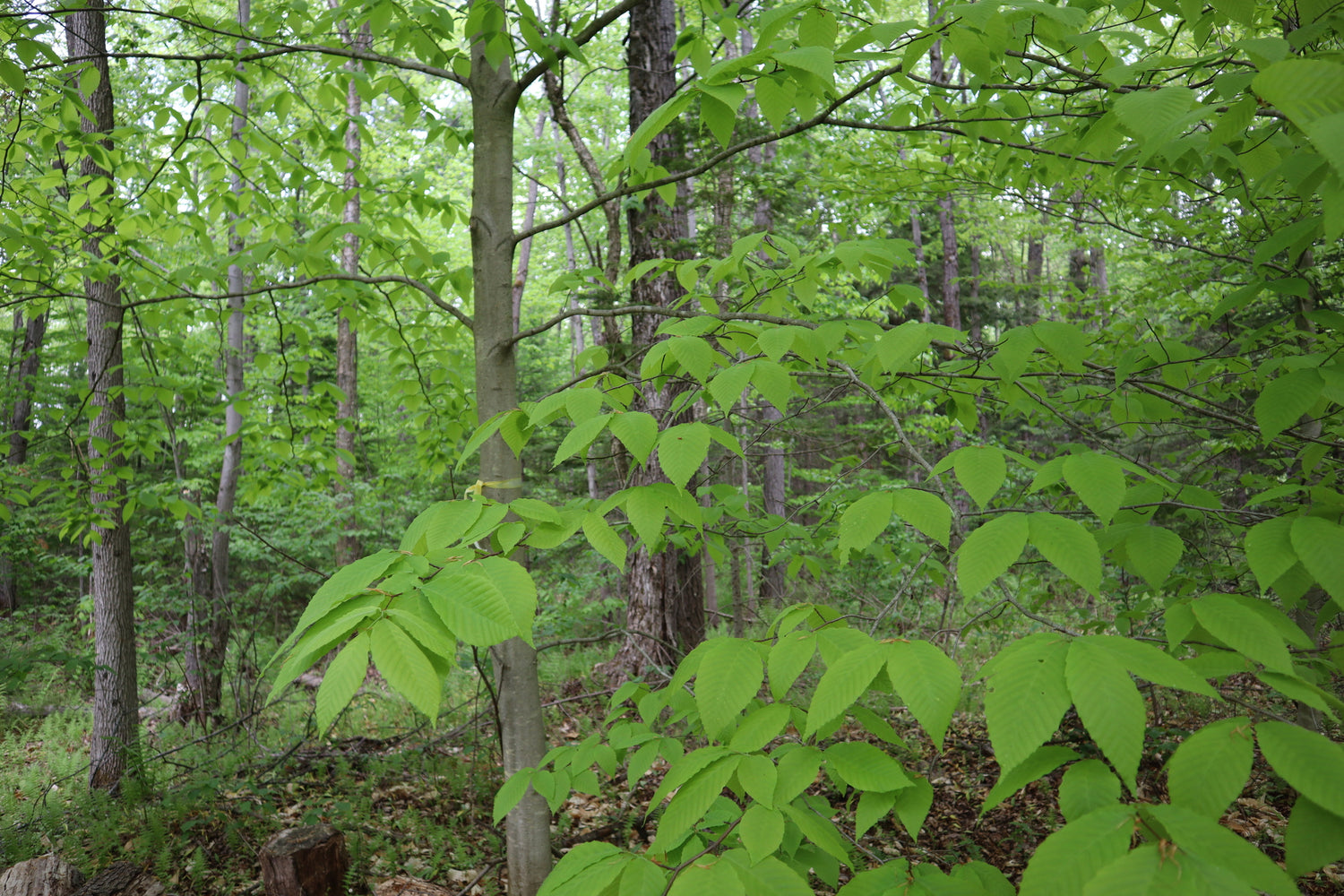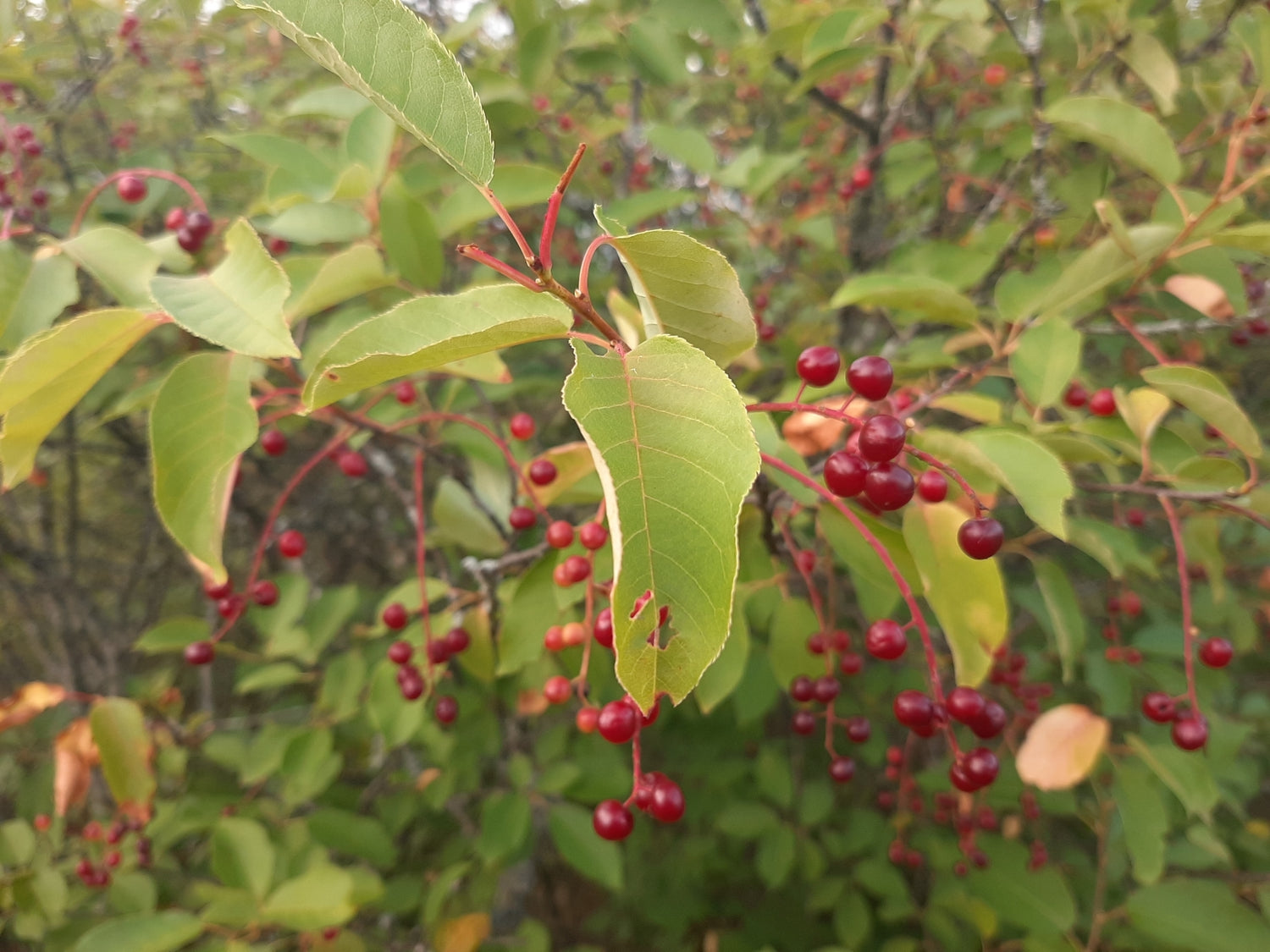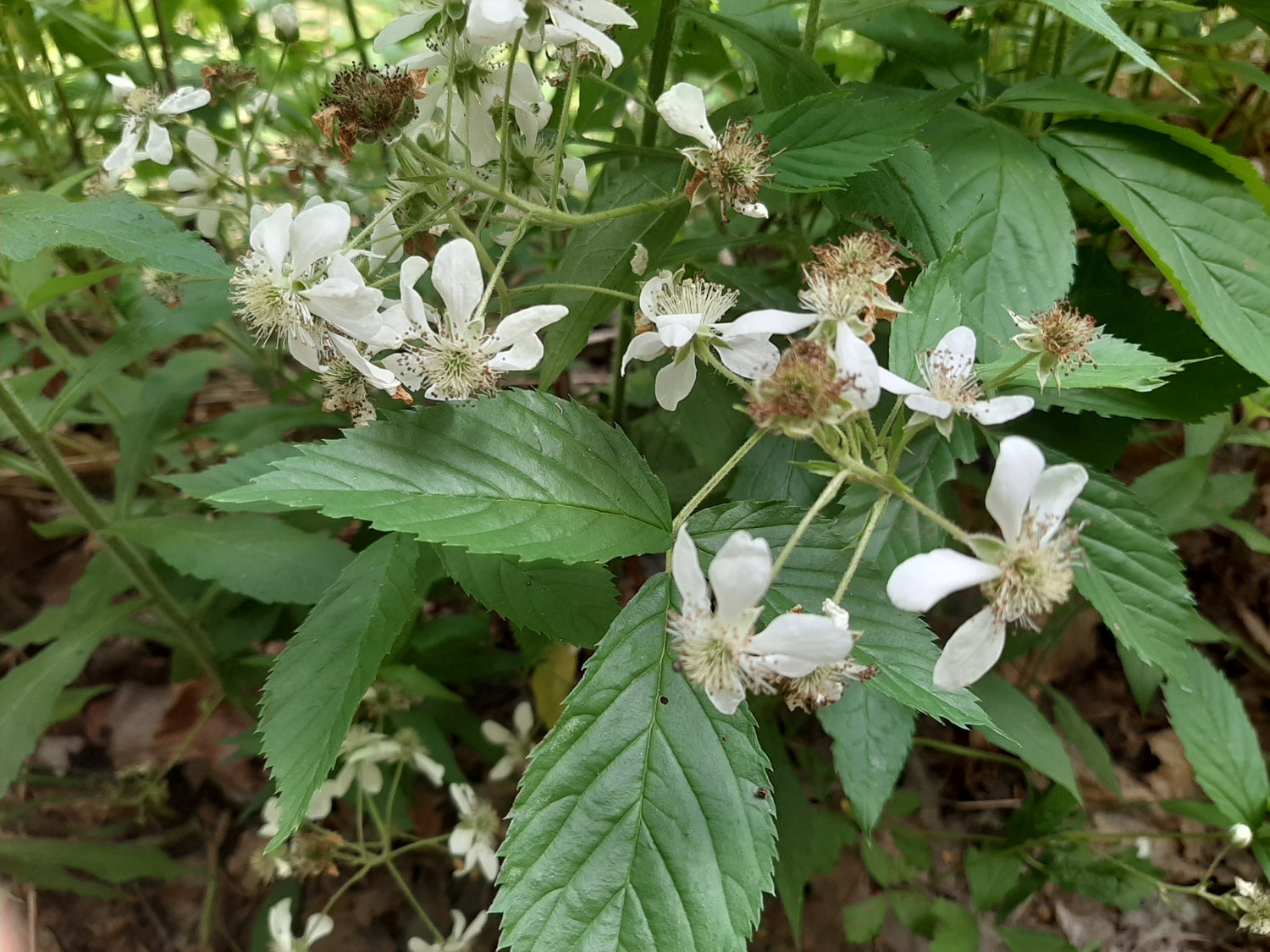Nursery for the Earth
Prunus serotina (Fr: Cerisier tardif | En: Black cherry)
Couldn't load pickup availability
Black Cherry
Prunus serotina
Alternative names: Rum Cherry, Wild Black Cherry
French: Cerisier tardif
Black Cherry is the largest of our native cherry species and one of only two that grow into a true single-stemmed tree. As a mature tree, it is easily identified by its dark, flaky, scaled bark. Young trees can resemble chokecherry but can be distinguished by their single trunk and the fine fuzz on the underside of the leaf midvein.
In spring, it produces fragrant white flower clusters that develop into small, dark purple to black fruits. These cherries are more palatable than those of chokecherry for many people, though taste can vary considerably between trees. The fruit is best used in syrups, jellies, pies, or fermented into wine or liqueurs. The nickname “Rum Cherry” comes from its historical use in flavouring rum and other spirits.
⚠️ Caution: Like all Prunus species, the pits and other parts of the plant (except the fleshy fruit) contain compounds that can release cyanide. You may notice a faint almond scent when crushing leaves or twigs—this is the signature of those compounds. Do not consume the pits.
Traditionally, the inner bark was used in tonics and cough syrups—likely the reason many associate cherry flavour with medicine. However, home preparations are strongly discouraged due to the risk of poisoning.
Wood value
The wood of Black Cherry is among the most prized hardwoods in eastern North America—used in fine furniture, cabinetry, flooring, woodturning, musical instruments, and tobacco pipes. Like Black Walnut (Juglans nigra), it’s considered a high-value forestry species and can even be planted alongside walnut, as it is tolerant of juglone, the chemical released by walnut roots.
Ecological importance
Black Cherry is a keystone species for wildlife. Its fruit feeds a wide array of birds, including Orioles (Icterus galbula), Cedar Waxwings (Bombycilla cedrorum), and Scarlet Tanagers (Piranga olivacea). Its leaves support dozens of Lepidoptera (moths and butterflies), including the Cherry Gall Azure (Celastrina serotina) and Wild Cherry Sphinx (Sphinx drupiferarum). Some caterpillars even feed on its leaves to absorb defensive toxins, similar to monarchs and milkweed.
It also hosts native tent caterpillars like the Eastern Tent Caterpillar (Malacosoma americanum), Ugly-nest Caterpillar (Archips cerasivorana), and Fall Webworm (Hyphantria cunea). These species rarely harm the tree and support a food web that includes birds like cuckoos, jays, and parasitic wasps.
Diseases
Black Cherry is susceptible to Black Knot (Apiosporina morbosa), a native fungal disease that forms black galls on branches. While a minor issue in natural ecosystems, it can become problematic in orchards or with non-native Prunus species. It is not currently present in Europe, and significant quarantine efforts aim to keep it from spreading.
Height: 15–24 m
Bloom time: Spring
Light: Full sun
Moisture: Moderate to moist (intolerant of poorly drained soils)
Soil: Various
Habitat: Deciduous and early successional forests
Ecological benefits: Host plant for numerous Lepidoptera, fruit for birds, supports complex food webs
Edible: Fruit (cooked); pits and other parts not edible
Share











